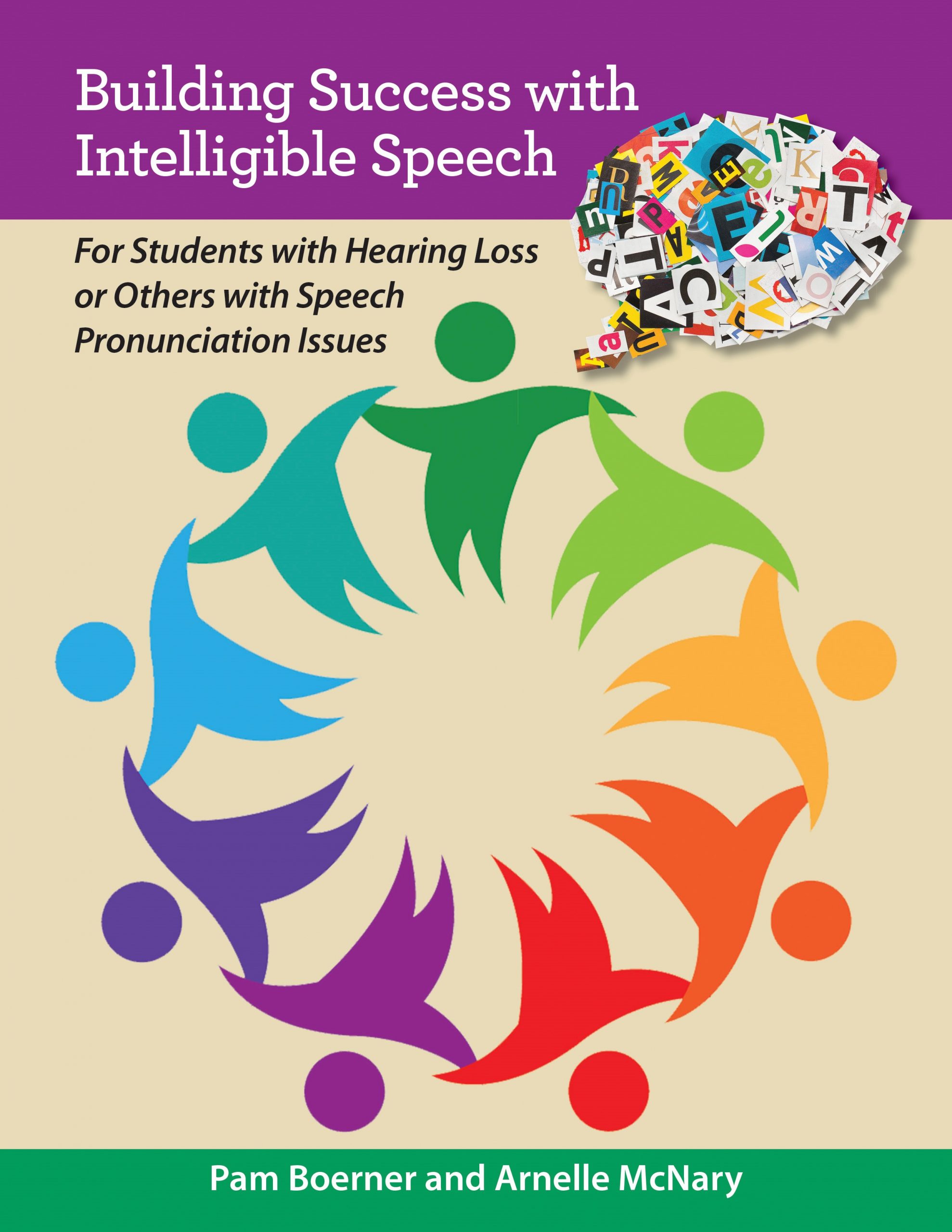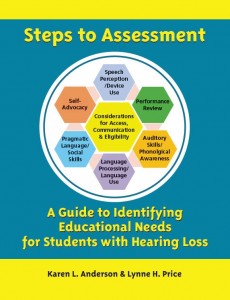Related Products
For Professionals
- Amplification
- Assessment of Student Skills, Challenges, Needs
- Early Childhood: Infants, Toddlers, Preschool
- Hearing Loss – Identification, Impact and Next Steps
- IDEA Law Summary Information
- Language and Speech Development Issues
- Legal Issues in Serving Children with Hearing Loss
- Listening (Auditory Skills) Development
- Planning to Meet Student Needs
- Self-Advocacy Skills for Students with Hearing Loss
- Self-Concept: How the Child with Hearing Loss Sees Himself
- Social Skills
- Speech Perception & Learning
Related Teacher Tools Takeout Items
Tests – Informal Assessments for Parents, Students, Teachers
I want to tell you that you greatly helped me last year. I had a child with a cochlear implant. I used many of the assessments provided on your website to complete with her and her mother. The assessments helped us determine sooo much! She is thriving this school year. Last year she was not. I strongly believe she is thriving because your assessments helped us figure out what direction to take her in. So thank you from the bottom of my heart for your help! You rock! -Candace, DHH Teacher
Thanks to the authors who have generously given their permission for their work to be included on this website for use for educational purposes.Monitoring listening ability and home or school function of children with hearing loss
ELF – Early Listening Function (Phonak version)
ELF – (Oticon version)
- Discovery tool for parents to begin to understand the impact of hearing loss for their infant with newly diagnosed hearing loss
- Introduces the concept of the Listening Bubble and restrictions to incidental language learning
- Used to identify difficulties listening in noise, need for trial period with FM system in home/child care
- The ELF stimuli can also be used with early elementary-age students as an exercise for them to discover the relative size of their listening bubble in quiet and noisy conditions.
- The Oticon version was produced subsequent to the Phonak version and has a clearer scoring methodology.
ELF Background Information and Scoring Examples ELF in Spanish by Karen Anderson, PhD ELFLING checklist – adapation of the ELF test format using the Ling sounds ELFLING procedure
Children’s Home Inventory of Listening Difficulties
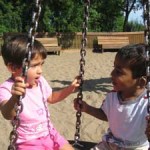 Version of CHILD to be completed by families (ages 3 – 12) – recommended especially for transition to school (age 3-5) Version of CHILD to be completed by the child (ages 8 – 12) CHILD – version with instructions/application by Karen Anderson, PhD & Joseph Smaldino, PhD
Version of CHILD to be completed by families (ages 3 – 12) – recommended especially for transition to school (age 3-5) Version of CHILD to be completed by the child (ages 8 – 12) CHILD – version with instructions/application by Karen Anderson, PhD & Joseph Smaldino, PhD
- Can be used as pretest and post-test for amplification use
- Can be used to determine need for assistive device use in home
- Used to assist in identifying listening strengths/nonstrengths prior to transition to school
- Can be used to advocate for classroom hearing technology (FM) re: functional listening in noise
CHILD in Spanish | CHILD in Arabic | Child in French | CHILD in Welsh | CHILD in Chinese
CHAPS – Children’s Auditory Performance Scale
The CHAPS asks 3-8 questions about a child’s auditory performance in 6 different listening conditions: Noise, Quiet, Ideal, Multiple Inputs, Auditory Memory Sequencing, and Auditory Attention Span. The results for each condition are scored as either normal or at-risk. Contact the author with questions. This test by Walter Smoski, PhD, Michael Brunt, PhD & Curtis Tannahill, PhD has been made available for use with the permission of Dr. Smoski (wsmoski@ilstu.edu).
Developmental Index of Audition and Listening (DIAL). From: Goals and Expectations of the Hearing Aid Fitting. Trends in Amp, 4(2), (1999).
Listening Inventory For Education- Revised (2012)
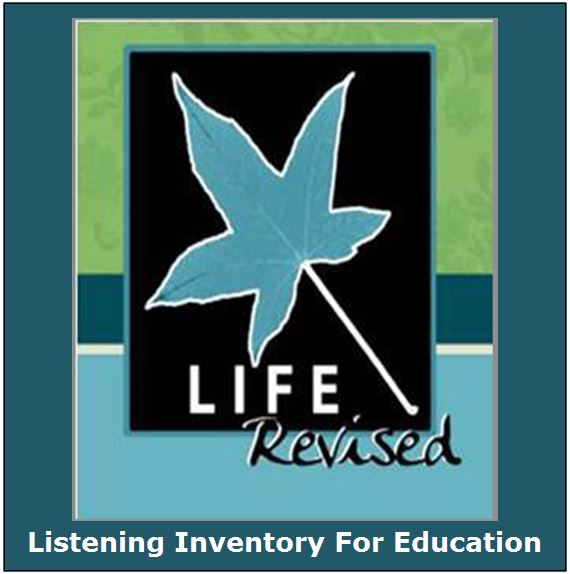 Listening Inventory For Education – Revised (LIFE-R) Efficacy Materials: this link brings you to the LIFE-R webpage including the LIFE-R Student Appraisal, LIFE-R Student Appraisal with Pictures and the Teacher LIFE-R.
Listening Inventory For Education – Revised (LIFE-R) Efficacy Materials: this link brings you to the LIFE-R webpage including the LIFE-R Student Appraisal, LIFE-R Student Appraisal with Pictures and the Teacher LIFE-R.
Functional Listening Evaluation (original version)
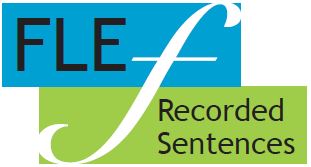 The Functional Listening Evaluation (FLE) was first described as a procedure in 1993 (developed by C. D. Johnson and P. Von Almen) and has become a ‘staple’ in most school systems as a means to estimate how well a student is able to access verbal instruction, and to what degree speechreading, distance and noise effect performance. The FLE can be performed with a variety of age-appropriate stimuli including single words, phrases, nonsense phrases and sentences depending upon if the desired information is about the precision of speech perception (words/nonsense material) or to estimate access to classroom communication (phrases for young children, sentences for grade 1 and above). A steady source of background noise and a means to control the loudness of the noise in comparison to the presenter’s voice is needed to perform the FLE in a valid manner.
The Functional Listening Evaluation (FLE) was first described as a procedure in 1993 (developed by C. D. Johnson and P. Von Almen) and has become a ‘staple’ in most school systems as a means to estimate how well a student is able to access verbal instruction, and to what degree speechreading, distance and noise effect performance. The FLE can be performed with a variety of age-appropriate stimuli including single words, phrases, nonsense phrases and sentences depending upon if the desired information is about the precision of speech perception (words/nonsense material) or to estimate access to classroom communication (phrases for young children, sentences for grade 1 and above). A steady source of background noise and a means to control the loudness of the noise in comparison to the presenter’s voice is needed to perform the FLE in a valid manner.
The self-calculating FLE response form can be used with any stimuli material. Cheryl DeConde Johnson has made available this response form and Common Children’s Phrases (standard and nonsense version). The Recorded FLE Using Sentences controls the noise level (+5 S/N) and can be played via your phone, iPad or computer. The Recorded FLE is available from Supporting Success for Children with Hearing Loss. A 10-minute classroom noise file has been included on this website for educator use, however FLE presenters are cautioned to use a sound level meter so that the levels of speech and noise are measured during the evaluation.
Spanish Translation of Pediatric Common Phrases List (Word) (PDF) 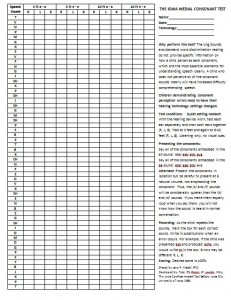 Iowa Medial Consonant Test – students repeat VCV phrases (i.e., eevee, eetee, eesee). A student with a hearing level of 70 dB HL or better should be able to repeat the VCV phrases with 100% accuracy when presented at 3 feet in quiet without visual cues. This a test of precision listening ability. Poorer than expected results can indicate improperly fit hearing aids and/or a lack of auditory development of fine auditory discrimination between phonemes.
Iowa Medial Consonant Test – students repeat VCV phrases (i.e., eevee, eetee, eesee). A student with a hearing level of 70 dB HL or better should be able to repeat the VCV phrases with 100% accuracy when presented at 3 feet in quiet without visual cues. This a test of precision listening ability. Poorer than expected results can indicate improperly fit hearing aids and/or a lack of auditory development of fine auditory discrimination between phonemes.
Classroom Observation Form: Observational Record of Behavior of Deaf or Hard of Hearing Students
Screening Instruments For Targeting Educational Risk
Beautifully redesigned, fillable and self-calculating versions of all 3 SIFTER forms enable emailing a form to a teacher, having her complete it, and sending it back to the managing teacher of the deaf/hard of hearing or educational audiologist. Redesigned, fillable forms can be found at Teacher Tools Takeout (teachertoolstakeout.com). Paper versions below are still available at no cost.
Preschool SIFTER
 by Karen Anderson, PhD & Noel Matkin, PhD Teacher completed questionnaire for children with hearing loss who are age 3 through age 5. Paper format only. It is unlawful to create an online version of the Preschool SIFTER or post to on other websites.
by Karen Anderson, PhD & Noel Matkin, PhD Teacher completed questionnaire for children with hearing loss who are age 3 through age 5. Paper format only. It is unlawful to create an online version of the Preschool SIFTER or post to on other websites.
Preschool SIFTER in Spanish | Preschool SIFTER in Spanish | (alternate version) Preschool SIFTER in French | Preschool SIFTER in Arabic|Preschool SIFTER in Turkish
SIFTER (Elementary)
 by Karen Anderson, PhD Teacher completed questionnaire for children with hearing loss in grade 1 through grade 5 or 6. It is unlawful to create an online version of the SIFTER or post to on other websites.
by Karen Anderson, PhD Teacher completed questionnaire for children with hearing loss in grade 1 through grade 5 or 6. It is unlawful to create an online version of the SIFTER or post to on other websites.
SIFTER in Spanish | SIFTER in Spanish | (alternate version) SIFTER in Danish | Danish Instructions |SIFTER in French | SIFTER in Arabic |SIFTER in Welsh | SIFTER in Turkish
Secondary SIFTER
 by Karen Anderson, PhD Teacher completed questionnaire for children with hearing loss in middle and high school. It is unlawful to create an online version of the Secondary SIFTER or post to on other websites.
by Karen Anderson, PhD Teacher completed questionnaire for children with hearing loss in middle and high school. It is unlawful to create an online version of the Secondary SIFTER or post to on other websites.
Secondary SIFTER in Spanish | Secondary SIFTER in Spanish (alternate version) | Secondary SIFTER in Danish | Secondary SIFTER Danish Instructions | Secondary SIFTER in French | Secondary SIFTER in Portuguese |Secondary SIFTER in Turkish
Fatigue and Learning – Informal Assessment of Fatigue and Learning Scale
Children with hearing loss have fragmented hearing, which causes them to expend more effort, leaving fewer cognitive resources for listening comprehension and overall contributes to a higher level of fatigue than class peers and ultimately decreases pace of learning. This pair of brief checklists includes norms for typically developing children in grades 4-9. So a child is performing well in the classroom – at what cost? (effort/fatigue)
Developing Skills Related to Hearing Status
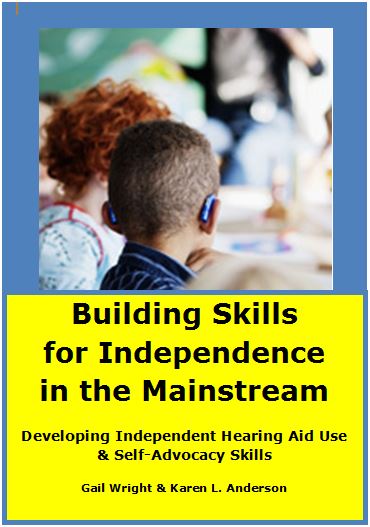 Audiology Self-Advocacy Checklist-ELEMENTARY SCHOOL (ASAC-ES) Audiology Self-Advocacy Checklist-MIDDLE SCHOOL (ASAC-ES) Audiology Self-Advocacy Checklist-HIGH SCHOOL (ASAC-ES) These checklists contains skills that students should develop during elementary, middle and high school related to their hearing status. To complete the checklist, enter the date the topic is introduced and then track performance using the progress levels (1, 2, or 3). If the skill has not yet been introduced (NI) the item is included but does not receive a score. If the skill is not applicable for a student, note NA and eliminate that item in the overall scoring. Specific skills that are being addressed may also be recorded as objectives on the student’s IEP. Skills should be re-evaluated at least annually. Follow the scoring directions at the bottom to obtain an overall performance level. A mastery level of 90-100% indicates the student’s audiology self-advocacy skills are functioning at the proficient level. If proficiency is not reached when the student transitions to middle school, work should continue on the deficient skills.
Audiology Self-Advocacy Checklist-ELEMENTARY SCHOOL (ASAC-ES) Audiology Self-Advocacy Checklist-MIDDLE SCHOOL (ASAC-ES) Audiology Self-Advocacy Checklist-HIGH SCHOOL (ASAC-ES) These checklists contains skills that students should develop during elementary, middle and high school related to their hearing status. To complete the checklist, enter the date the topic is introduced and then track performance using the progress levels (1, 2, or 3). If the skill has not yet been introduced (NI) the item is included but does not receive a score. If the skill is not applicable for a student, note NA and eliminate that item in the overall scoring. Specific skills that are being addressed may also be recorded as objectives on the student’s IEP. Skills should be re-evaluated at least annually. Follow the scoring directions at the bottom to obtain an overall performance level. A mastery level of 90-100% indicates the student’s audiology self-advocacy skills are functioning at the proficient level. If proficiency is not reached when the student transitions to middle school, work should continue on the deficient skills.
Monitoring social concerns and school interactions of children and (pre)teens with hearing loss
Checklist of Socio-Pragmatic Language Behaviors for Students with Sensory Impairment. This checklist was found on the internet authorless and I reformatted it to fit on one page. It includes many of the items from the Pragmatics Checklist in a manner more appropriate to school-age (K+) students. It is NOT normed or validated in any way but could be useful for planning or monitoring progress. If you developed this material please contact me so your name can be specified as author.
 Childrens Peer Relationship Scale This scale is an elementary school survey that provides insights into the early elementary school student’s communication partners, socialization, and attitudes toward wearing hearing devices. It has been made available for use with the permission of Kris English, PhD. CHildren’s Peer Relationship Scale in French
Childrens Peer Relationship Scale This scale is an elementary school survey that provides insights into the early elementary school student’s communication partners, socialization, and attitudes toward wearing hearing devices. It has been made available for use with the permission of Kris English, PhD. CHildren’s Peer Relationship Scale in French
Minnesota Social Skills Checklist for Students who are Deaf-Hard of Hearing This Minnesota Social Skills Checklist is designed to guide for teachers of the deaf/hard of hearing in looking at skills needed in the areas of: social skills, pragmatics or language as it relates to social communication, friendship and self-esteem. Many learners who are deaf/hard of hearing need additional teaching in these areas. These types of skills are most often learned through incidental learning which students who are deaf/hard of hearing often miss due to their hearing loss. This ambitious checklist was developed by a variety of experienced contributors and was made available to professionals by the Minnesota Department of Education (refer to the MDE website for the available PowerPoint training on how to use the Social Skills Checklist).
Minnesota Compensatory Skills Checklist This Checklist was developed collaboratively as a model for itinerant teachers to use with hard-of-hearing students; however, it can be adapted for use with any population with hearing loss. It was developed as a hierarchy of self-advocacy and compensatory skills specific to students with hearing loss from grades kindergarten through high school. It is not an evaluation but it can contribute to identifying student needs and monitoring progress. The following topics are included: understanding hearing loss, amplification management, resources and technology, communication strategies, and personal/interpersonal skills. This ambitious checklist was also developed by a variety of experienced contributors and was made available to professionals by the Minnesota Department of Education.
 Pragmatics Checklist Fits on one page and can be completed individually by the parents or as part of an interview dialogue with the early interventionist. The majority (75%) of children will be able to use complex language (full expressions of more than 3 words) per the following: Age 3: 20 of 45 items; Age 4: 43 of 45 items; Age 5: 44 of 45 items; Age 6: 45 items. Therefore, at transition, a child should have mastered 20 of the items using complex language. By entry into kindergarten, all items can be expected using complex language. See the Social Communication – Pragmatics page for more information.
Pragmatics Checklist Fits on one page and can be completed individually by the parents or as part of an interview dialogue with the early interventionist. The majority (75%) of children will be able to use complex language (full expressions of more than 3 words) per the following: Age 3: 20 of 45 items; Age 4: 43 of 45 items; Age 5: 44 of 45 items; Age 6: 45 items. Therefore, at transition, a child should have mastered 20 of the items using complex language. By entry into kindergarten, all items can be expected using complex language. See the Social Communication – Pragmatics page for more information.
SAC-A – Self Assessment of Communication-Adolescent A questionnaire that assists adolescents in identifying problems due to hearing loss. As responses are discussed with a hearing professional, the student may gain understanding in how hearing loss is effecting him/her and provide insights on how the problems may be better managed. This test has been made available for use with the permission of Judy Elkayam (judy8590@comcast.net) and Kris English.
SOAC-A – Significant Other Assessment of Communication – Adolescent  A questionnaire for friends of students with hearing loss to assist in identifying problems that the hearing loss may be causing. SOAC-A and SAC-A answers are compared in a discussion with the individual with hearing loss and his/her friend(s) to result in new ways that problems can be managed. This test has been made available for use with the permission of Judy Elkayam (judy8590@comcast.net) and Kris English. Contact the author(s) for any questions on the SAC-A or SOAC-A.
A questionnaire for friends of students with hearing loss to assist in identifying problems that the hearing loss may be causing. SOAC-A and SAC-A answers are compared in a discussion with the individual with hearing loss and his/her friend(s) to result in new ways that problems can be managed. This test has been made available for use with the permission of Judy Elkayam (judy8590@comcast.net) and Kris English. Contact the author(s) for any questions on the SAC-A or SOAC-A.
Social Skills Functional Assessment Checklists: Social Skills Checklist (PreK/Elementary) | Social Skills Checklist (Secondary) | The Social Attributes Checklist
Does this student have a poor self concept? is a 15-item checklist to be completed by the classroom teacher or DHH teacher in discussion with the classroom teacher. All items are stated negatively, such as “Gives up easily.”
Think About It Quiz is a checklist to assess self concept that was developed for use with adolescents and focuses on five areas or domains in which this population typically judges themselves against their peers: Athletic Competence, Conduct/Morality, Peer Acceptance, Physical Appearance, and Scholastic Competence. Easy to score, the Think About It Quiz can identify if a student has a negative self-concept in one or more of these domains. By intervening to improve adolescents’ self-concepts it is possible to influence the social, academic, and behavioral adjustment of adolescents at a critical time in their development.
Placement and Readiness Checklists
Placement and Readiness Checklists (PARC) for students who are deaf and hard of hearing help Individualized Education Program (IEP) teams make decisions about programming and placement for students who are deaf and hard of hearing. Four readiness checklists focus on essential skills that students require in order to actively and meaningfully participate in their education programs. The placement checklist helps IEP teams evaluate the accessibility and appropriateness of the general education setting to support students who are deaf and hard of hearing.
PARC General Inclusion Checklist – A study in Iowa (2016) verified that the General Education Inclusion Readiness Checklist, one protocol from the PARC, is a reliable and valid tool for identifying the readiness skills of students who are deaf and hard of hearing. Students in grades K-7 were included. This reliability research compared student results on the PARC General Education Inclusion Checklist with the Iowa Assessments and Iowa’s Formative Assessment for Teachers (FAST). Mean ratings were significantly lower for students with hearing loss than their typically hearing peers. PARC checklists were developed for use in Colorado by a team lead by Cheryl DeConde Johnson permission has been provided for widespread use of the PARC Checklists.

